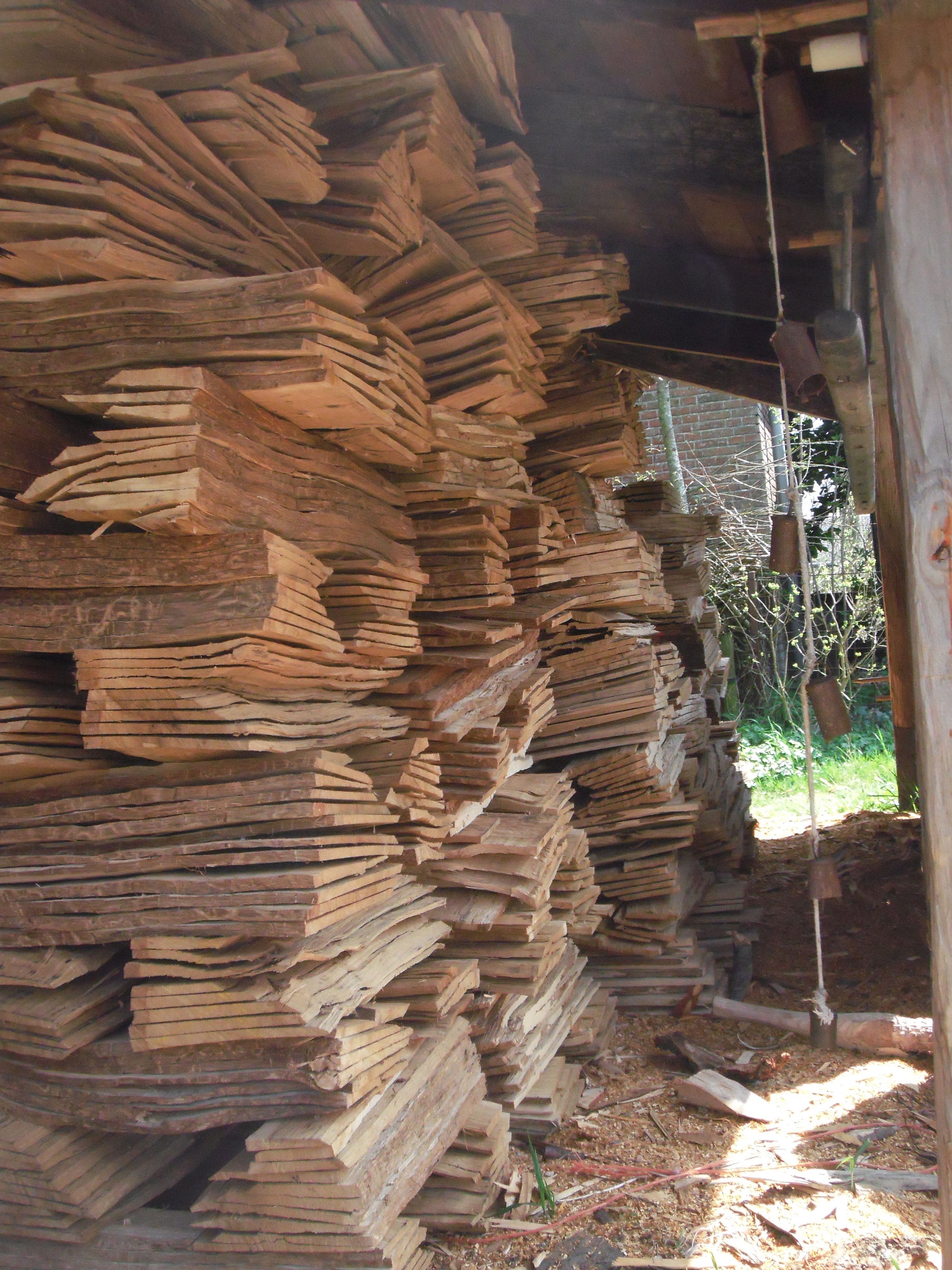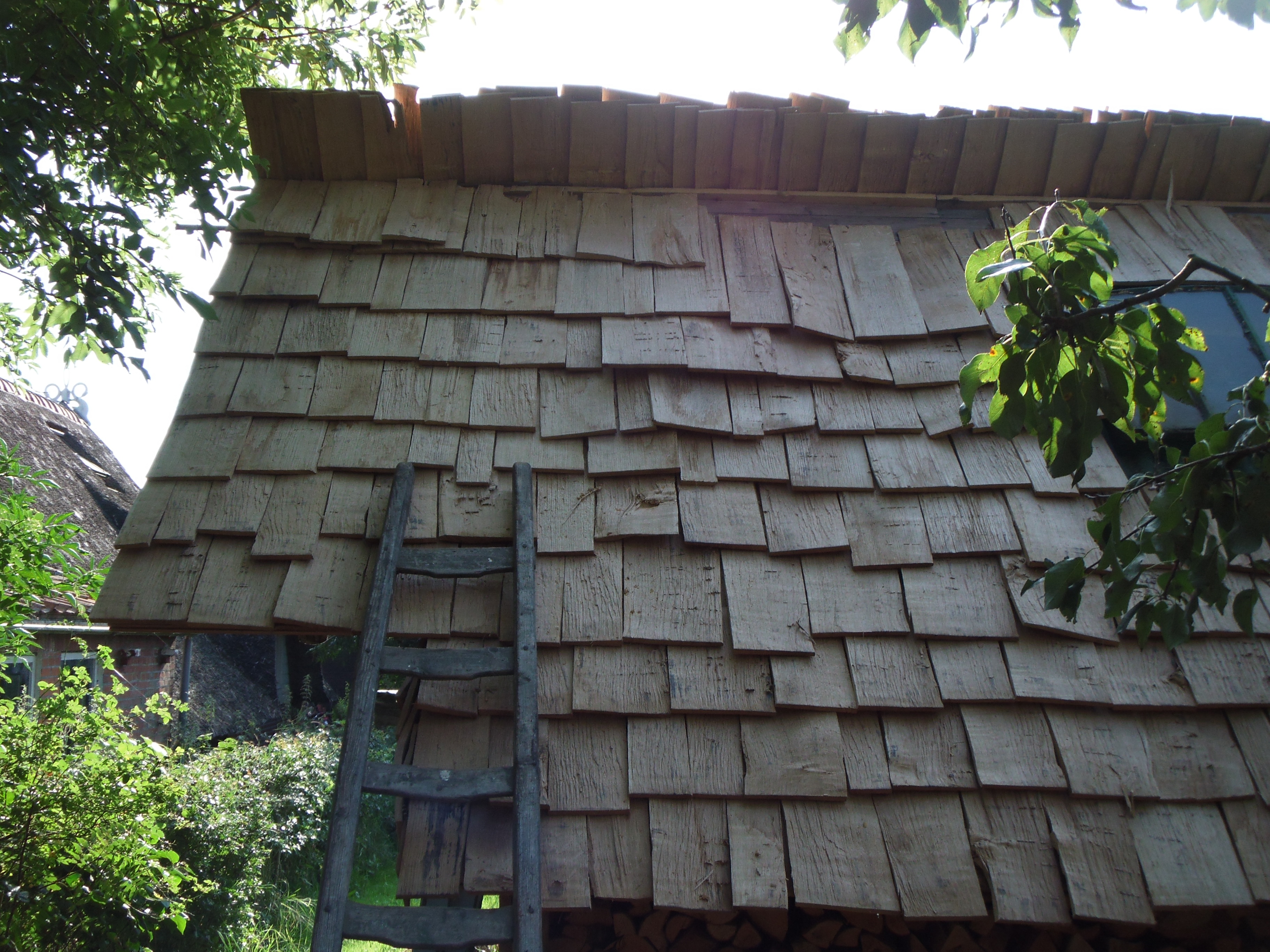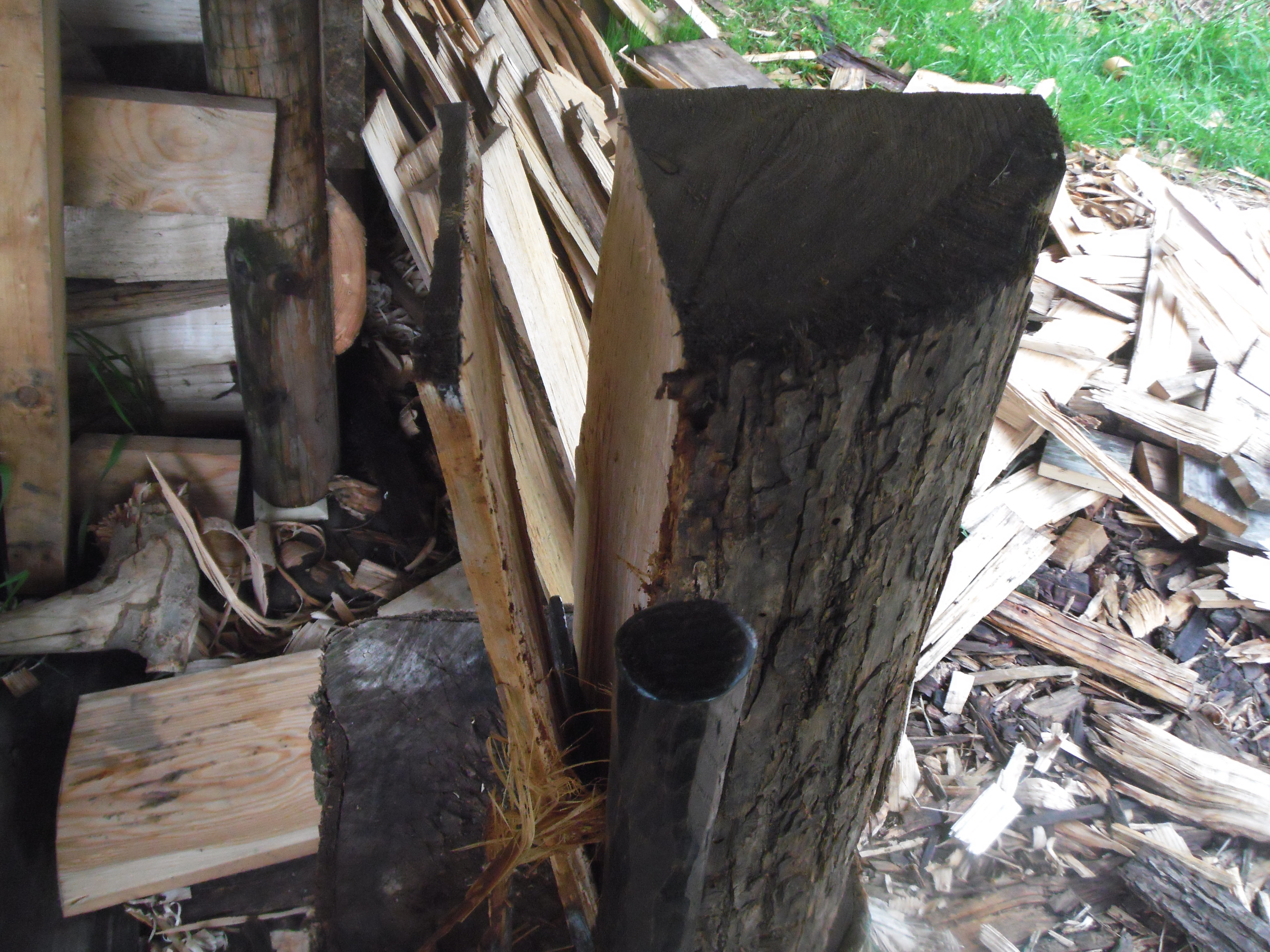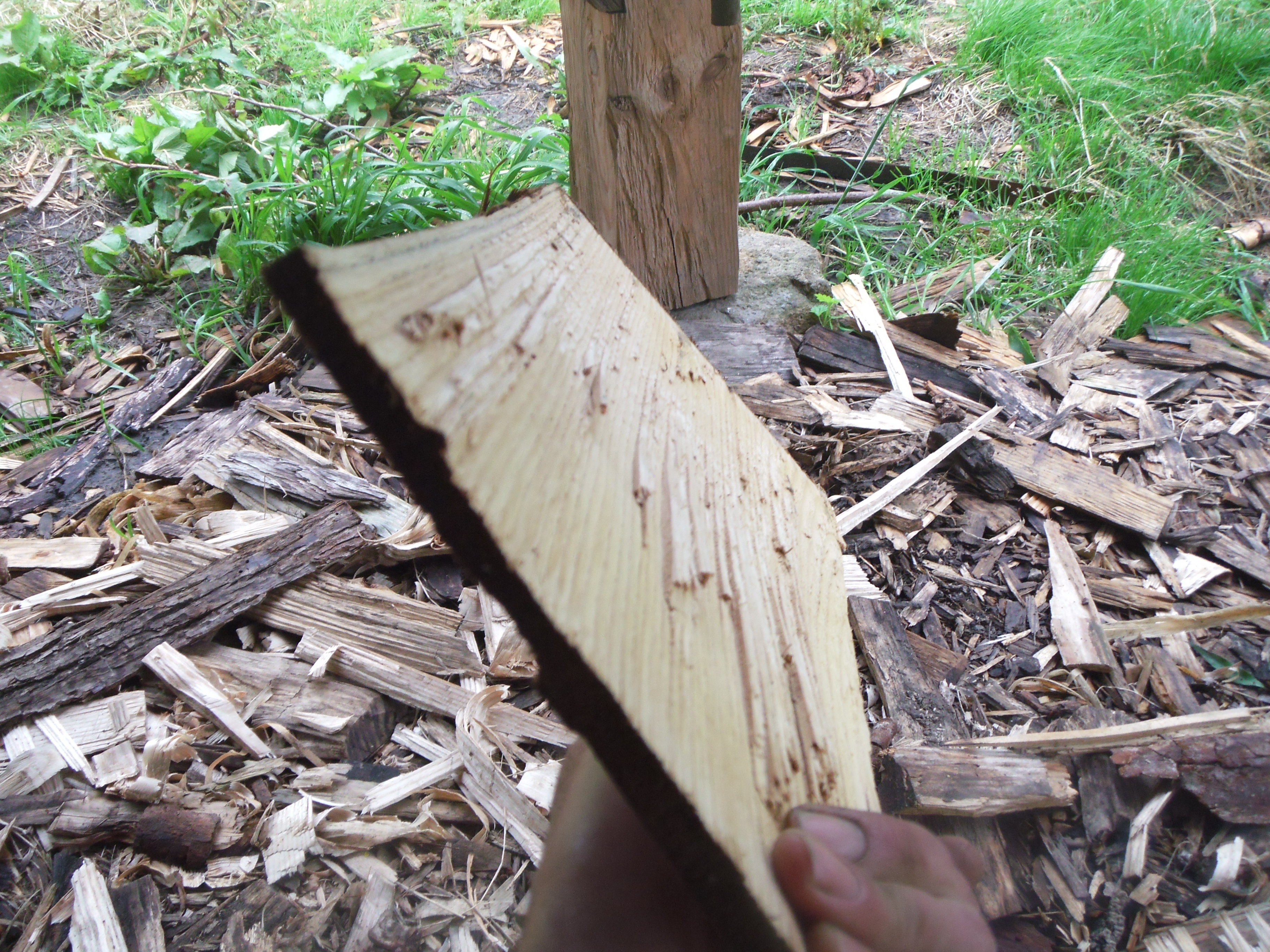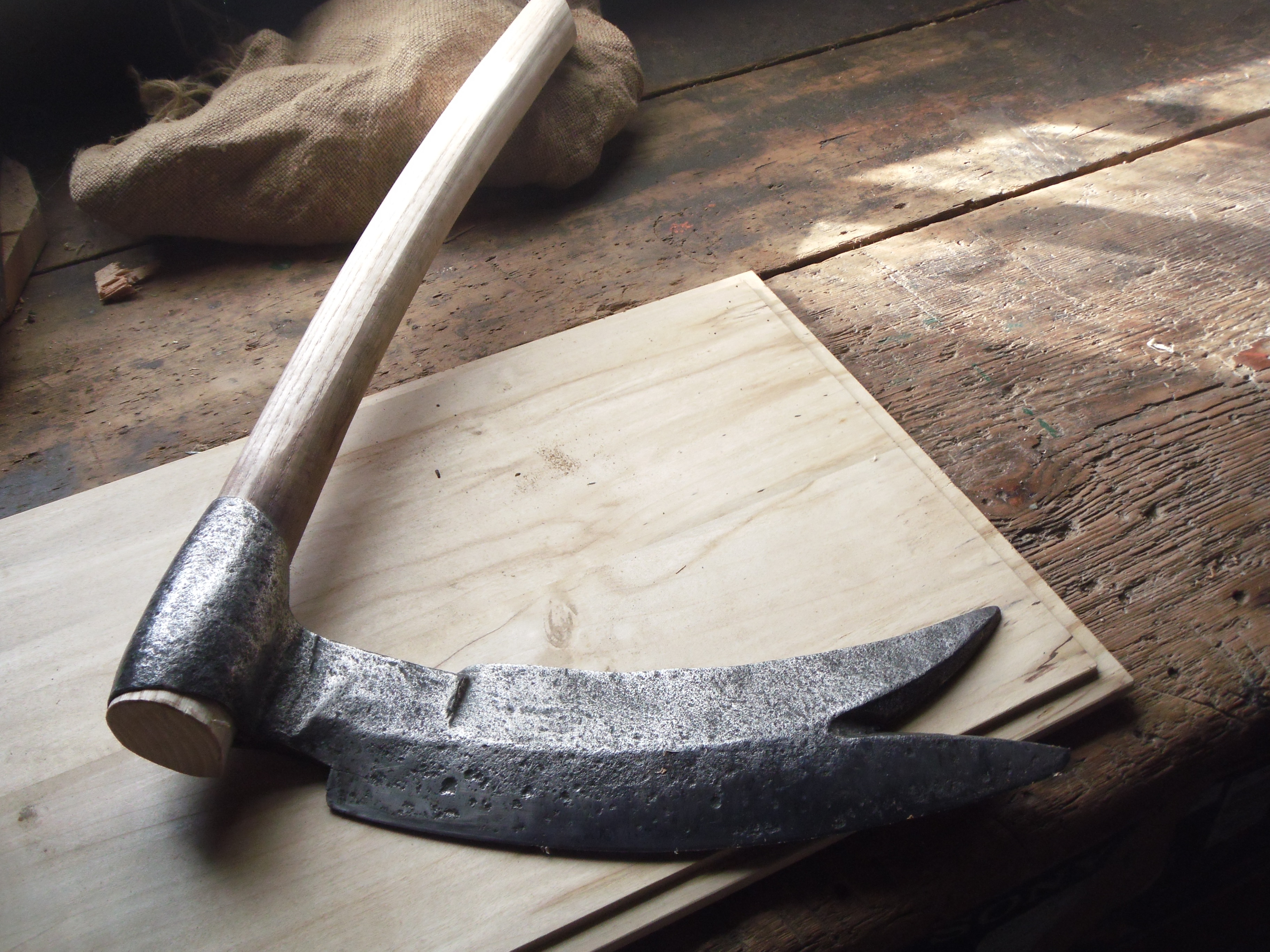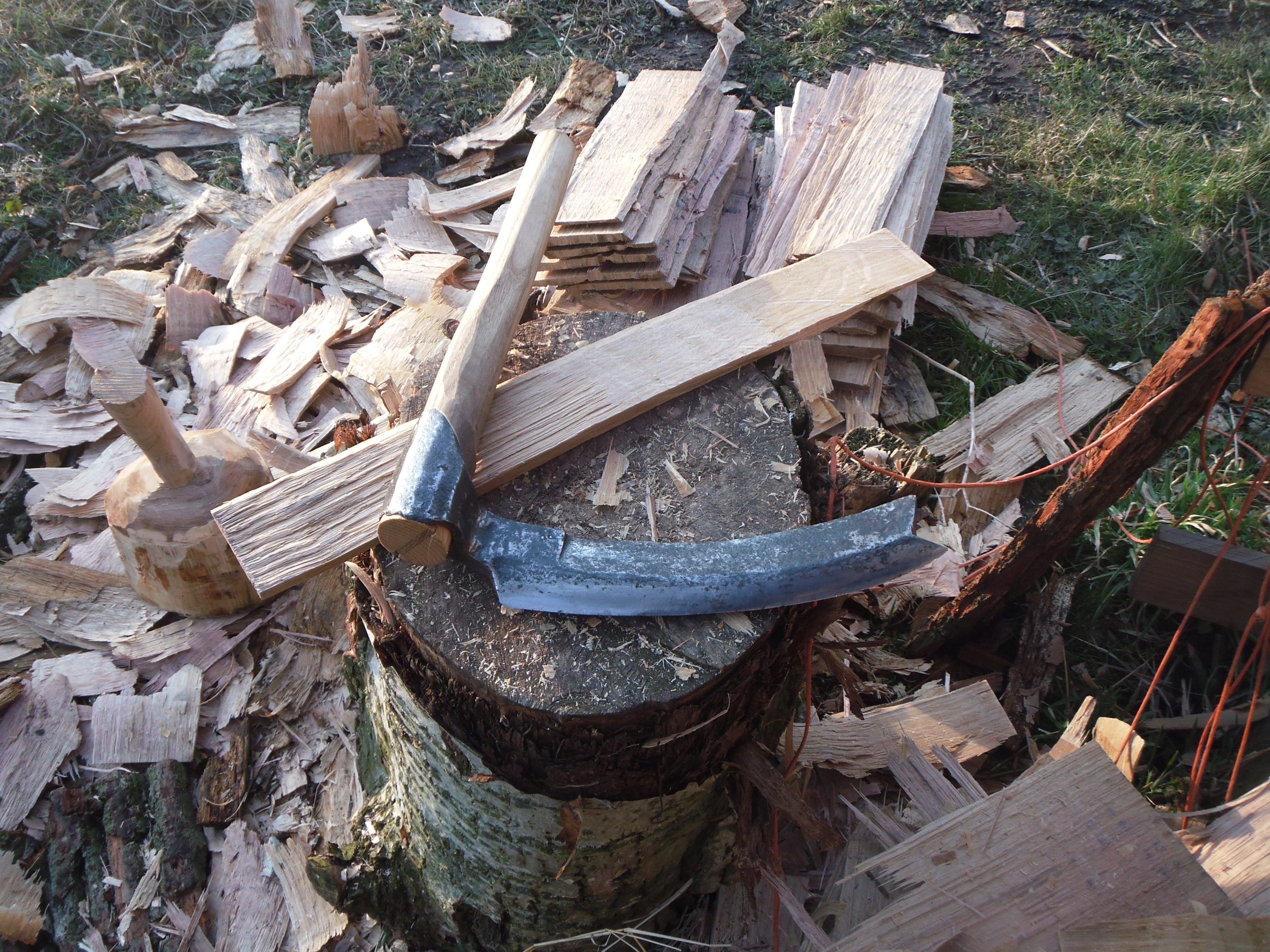- Joined
- Mar 2, 2013
- Messages
- 1,772
The stylized tip serves also a function and so this feature needs to be kept in order. One should never mistake the coutre, (no non-French equivalency) for the départoir, (froe), though both are tools of the cooper. I consider the coutre fulfills the criteria defining what constitutes an axe.

As I sharpened my coutre today I had noticed that over time and through continuous edge maintenance the fish or swallow tail has gotten rounded and diminished. So clearly it was time for addressing things at this end as well.

The edge on such a tool can pose certain difficulties in maintenance because, being so long and with a eccentric center of gravity, taking its handle into account, it becomes unwieldy. The provision of the separated points at the blade's end is an ingenious means for anchoring it in a block of wood to stabilize it while sharpening as show here in this film.
[archiveorg Coutre width=640 height=480 frameborder=0 webkitallowfullscreen=true mozallowfullscreen=true] <iframe src="https://archive.org/embed/Coutre" width="640" height="480" frameborder="0" webkitallowfullscreen="true" mozallowfullscreen="true" allowfullscreen></iframe>
https://archive.org/details/Coutre

As I sharpened my coutre today I had noticed that over time and through continuous edge maintenance the fish or swallow tail has gotten rounded and diminished. So clearly it was time for addressing things at this end as well.

The edge on such a tool can pose certain difficulties in maintenance because, being so long and with a eccentric center of gravity, taking its handle into account, it becomes unwieldy. The provision of the separated points at the blade's end is an ingenious means for anchoring it in a block of wood to stabilize it while sharpening as show here in this film.
https://archive.org/details/Coutre
Last edited:

